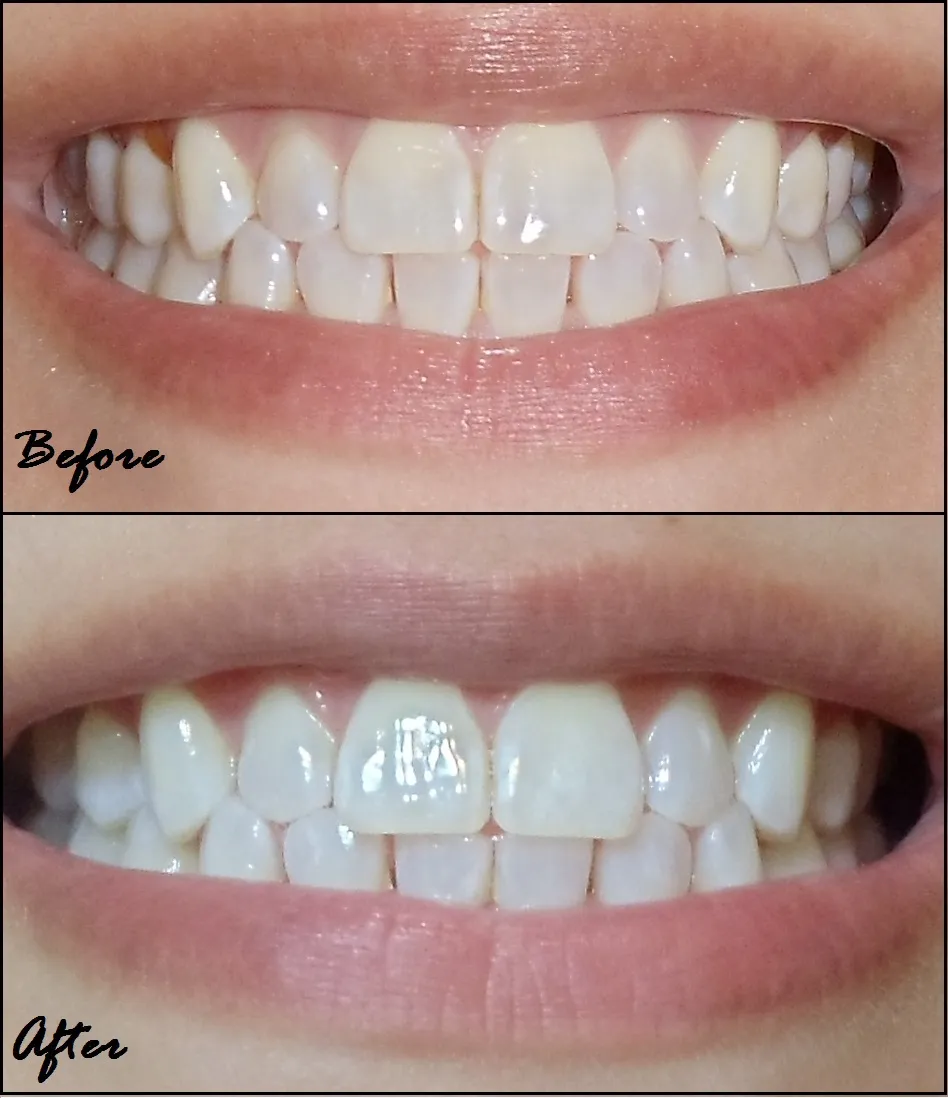Achieving a brighter, more confident smile is a goal for many, and Crest Whitening Strips have become a popular and accessible solution. But how well do these strips work, and what can you expect from them? This comprehensive guide dives deep into Crest Whitening Strips, exploring their science, effectiveness, usage, and how you can maximize your results for a sparkling, dazzling smile. Prepare to learn everything you need to know to make an informed decision about teeth whitening and achieve the smile of your dreams.
Why Crest Whitening Strips are Popular
Crest Whitening Strips have earned their popularity for a multitude of reasons. Primarily, they offer a convenient and affordable teeth-whitening solution that can be easily used at home. Compared to professional treatments, these strips provide a cost-effective alternative without the need for dentist appointments. Their ease of use is another key factor; the application process is straightforward and can be incorporated into daily routines with minimal effort. Furthermore, the noticeable results, often achieved within days, contribute significantly to their appeal, boosting users’ confidence and satisfaction. The wide availability of Crest Whitening Strips in various formulations also caters to different needs and preferences, solidifying their status as a go-to choice for many seeking a brighter smile. (Image: crest-whitening-strips-product.webp)
Understanding the Science Behind Crest Whitening Strips
Crest Whitening Strips leverage advanced science to effectively whiten teeth. The active ingredient, typically hydrogen peroxide or carbamide peroxide, penetrates the enamel to break down stain molecules. These molecules are responsible for the discoloration on your teeth. The peroxide molecules, which are the active ingredient, work by oxidizing the stain particles, which breaks them down, and the result is whiter teeth. The strips are designed to adhere closely to the teeth, ensuring the whitening agent remains in contact with the enamel for optimal results. This method targets both surface stains and those embedded deeper within the tooth structure. (Image: science-of-teeth-whitening.webp)
How Crest Whitening Strips Work
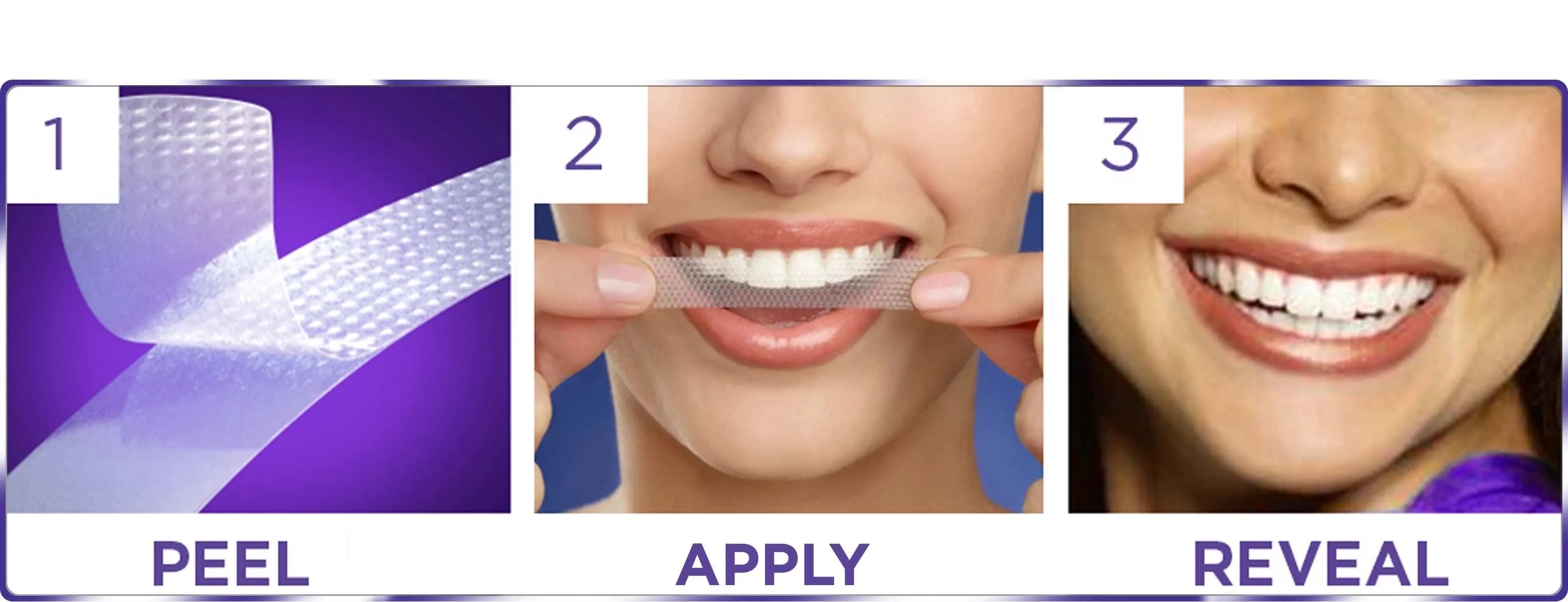
The process of how Crest Whitening Strips work involves several key steps. Once applied, the whitening agent, typically hydrogen peroxide, begins to penetrate the enamel, which is the outer layer of the tooth. This agent then breaks down stain molecules within the enamel, which is where the discoloration is happening. The strips stay in place, thanks to an adhesive that ensures consistent contact with the teeth. Over time, as the peroxide continues to work, the stain molecules are broken down. This results in a noticeable lightening of the teeth. This process is a safe and effective way to enhance the brightness of your smile.
Key Ingredients in Crest Whitening Strips
The core ingredient in Crest Whitening Strips is usually hydrogen peroxide or carbamide peroxide. The hydrogen peroxide is the active whitening agent that breaks down the stain molecules. Depending on the product, the concentration of hydrogen peroxide can vary, with higher concentrations potentially yielding faster results. Besides the active whitening agent, the strips also contain ingredients that help the strip adhere to the teeth, which also helps to protect the gums and enhance the overall whitening process. The specific formulation is designed to ensure both effectiveness and safety when used as directed. This ensures the strips are both effective and safe for your teeth.
The Effectiveness of Crest Whitening Strips
The effectiveness of Crest Whitening Strips is significant, with many users reporting visible results within days of starting treatment. The degree of whitening varies depending on the specific product used, the initial shade of the teeth, and the individual’s adherence to the instructions. Generally, these strips can lighten teeth several shades, significantly improving the overall appearance of the smile. Comparing before and after photos often reveals a dramatic transformation, showcasing the strips’ ability to remove surface stains and lighten the teeth. The effectiveness of the strips is also backed by clinical studies and consumer reviews, which provide confidence in their ability to deliver on their promises. (Image: teeth-whitening-before-after.webp)
Factors Influencing Results
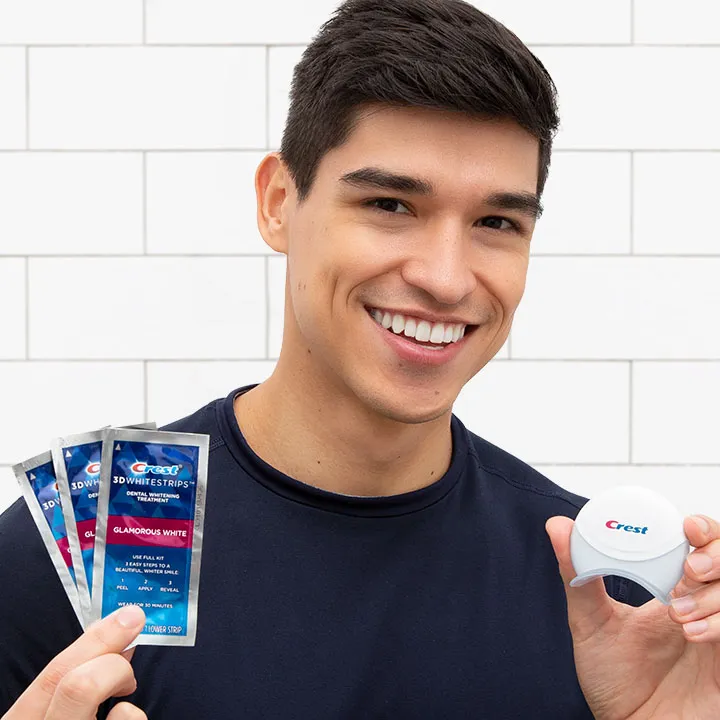
Several factors influence the results you can expect from Crest Whitening Strips. The type of stains on your teeth is a key factor; surface stains from coffee, tea, and tobacco tend to respond well, while intrinsic stains (caused by medications or genetics) might be less responsive. Consistency in application is crucial; following the recommended usage instructions will maximize your chances of achieving optimal results. The starting shade of your teeth also matters; individuals with darker teeth may see more dramatic changes than those who already have relatively bright teeth. Furthermore, the overall health of your teeth and gums can impact the effectiveness of the strips. This is why it’s important to consult your dentist before starting any teeth-whitening treatment. The health of your teeth is essential to how well the strips work.
Comparing Crest Whitening Strips with Other Methods
Crest Whitening Strips offer a compelling option when compared to other teeth-whitening methods. In-office treatments performed by a dentist provide the most immediate and often the most dramatic results, but they also come with a higher price tag and require appointments. Whitening toothpastes can help remove surface stains and maintain brightness, but they offer less dramatic whitening compared to strips or professional treatments. Custom-fit whitening trays, prescribed by a dentist, provide a middle ground, offering more control and often better results than over-the-counter strips, but require an initial investment and can be more time-consuming. Crest Whitening Strips stand out for their convenience, affordability, and ease of use, making them a popular choice for those seeking a balance between effectiveness and cost. Consider what your priorities are to determine which whitening method is the best fit.
How to Use Crest Whitening Strips Effectively
To get the best results from Crest Whitening Strips, it’s crucial to follow the instructions carefully. Begin by brushing your teeth, but do not apply the strips immediately after. Dry your teeth with a clean tissue before applying the strips, to help with adhesion. Carefully peel the strips from the backing and apply them to your upper and lower teeth, ensuring they cover the front surfaces. Gently press the strips to your teeth, making sure they adhere well. Leave the strips on for the recommended time, usually 30 minutes, and avoid eating or drinking during this period. After the treatment, remove the strips and discard them. Rinse your mouth to remove any residual gel. Regular and correct application of the strips is key to achieving a sparkling smile. (Image: crest-whitening-strips-application.webp)
Step by Step Guide
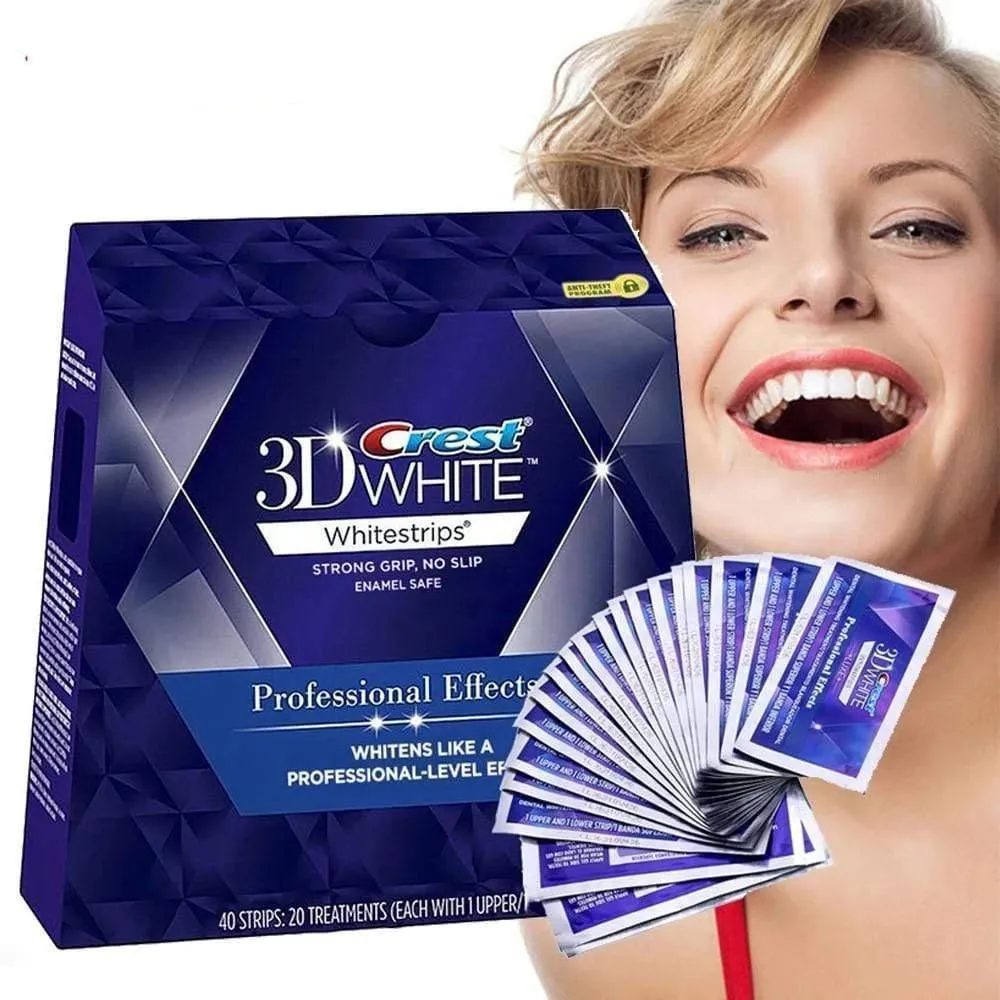
- Brush your teeth thoroughly to remove any surface debris and plaque.
- Dry your teeth with a clean tissue to ensure better adhesion of the strips.
- Peel the strips from their backing.
- Apply the longer strip to your upper teeth and the shorter strip to your lower teeth.
- Gently press the strips onto your teeth, ensuring full contact and proper coverage.
- Fold any excess strip material behind your teeth to secure them in place.
- Leave the strips on for the recommended time (usually 30 minutes).
- Remove the strips and discard them.
- Rinse your mouth with water to remove any residual gel.
Tips for Optimal Results
To maximize the effectiveness of Crest Whitening Strips, consider these tips. Avoid eating or drinking (especially coffee, tea, and red wine) while the strips are in place and for at least an hour after. If you experience any sensitivity, you can reduce the treatment time or skip a day. Make sure to follow the instructions on the product packaging. Store your strips in a cool, dry place to maintain their efficacy. Using a whitening toothpaste can help to maintain your results. Additionally, consider using a soft-bristled toothbrush and brushing gently to protect your enamel. Consistency and adherence to these tips will help you get the best possible results.
Potential Side Effects and How to Manage Them
While Crest Whitening Strips are generally safe, some users may experience side effects. Tooth sensitivity is a common issue, but it is usually temporary. Gum irritation is another potential side effect. Understanding these potential issues and how to manage them is important for a comfortable and effective whitening experience. Being aware of these potential side effects can help you manage any discomfort and continue to enjoy your brighter smile. (Image: sensitive-teeth-care.webp)
Common Side Effects
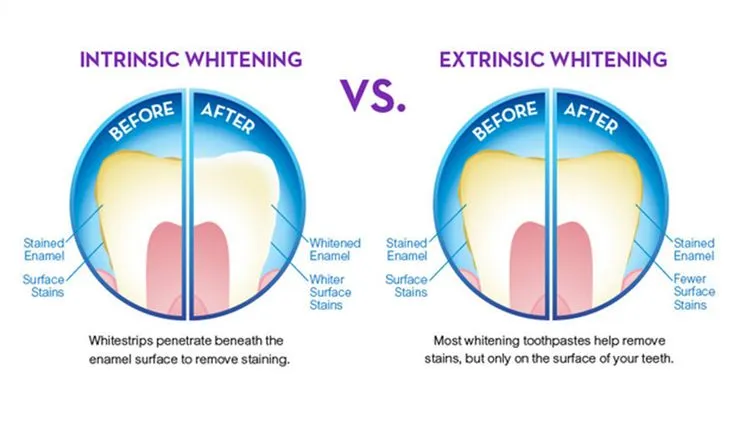
- Tooth sensitivity the most common side effect, which may cause discomfort when consuming hot or cold foods or drinks.
- Gum irritation may occur if the whitening gel comes into contact with the gums for an extended period.
- Sore throat, some users might experience a mild sore throat, especially during the initial use.
- Uneven whitening can occur if the strips aren’t applied evenly.
Managing Sensitivity
If you experience tooth sensitivity, there are several ways to manage it. Use a toothpaste designed for sensitive teeth, which contains ingredients that help to block the tubules in your teeth, reducing sensitivity. Avoid using the strips on consecutive days, allowing your teeth to recover between treatments. Reduce the amount of time you keep the strips on your teeth. If sensitivity persists, discontinue use and consult your dentist. Consider using a fluoride rinse to help strengthen your enamel and reduce sensitivity. Be patient and listen to your teeth. You can reduce the frequency of your treatments.
Maintaining Your Sparkling Smile
Once you have achieved your desired level of whitening, it is important to maintain your results. This involves a combination of good oral hygiene practices and regular dental check-ups. Proper care will ensure that your smile remains bright and healthy for a long time. Adopting a consistent routine and maintaining good habits are key to long-term results. (Image: oral-hygiene-routine.webp)
Oral Hygiene Practices
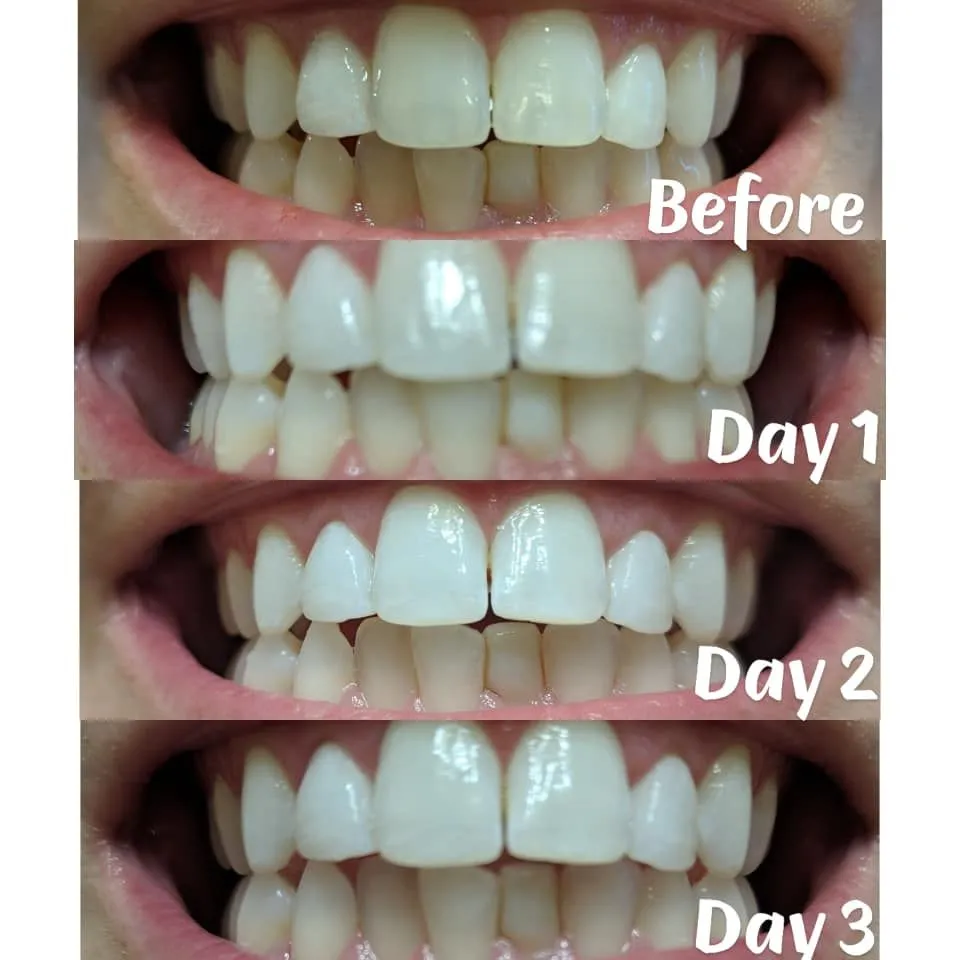
Consistent oral hygiene is crucial for maintaining a sparkling smile. Brush your teeth at least twice a day with a fluoride toothpaste, and be sure to brush for two minutes each time. Floss daily to remove plaque and debris from between your teeth. Use mouthwash to further reduce bacteria and freshen breath. Limit your intake of stain-causing foods and drinks, such as coffee, tea, red wine, and dark-colored berries. If you consume these items, brush your teeth afterward. Consider using a whitening toothpaste to gently remove surface stains and maintain brightness. Proper care of your teeth will help to keep your smile bright.
Regular Dental Check Ups
Regular visits to your dentist are essential for maintaining oral health and the results of your teeth-whitening treatments. Your dentist can perform a professional cleaning to remove plaque and tartar, which can dull your smile. They can also assess your overall oral health and address any issues, such as cavities or gum disease, that could affect your teeth’s appearance. Schedule check-ups every six months, or as recommended by your dentist, to maintain a healthy, bright smile. This ensures any potential issues are caught early. (Image: dentist-checkup.webp)
Crest Whitening Strips can be a highly effective way to achieve a brighter smile. By understanding the science behind these strips, using them correctly, and managing potential side effects, you can successfully enhance your smile. Remember to maintain your results with good oral hygiene and regular dental check-ups. With the right approach, you can confidently flash your sparkling, dazzling smile.
